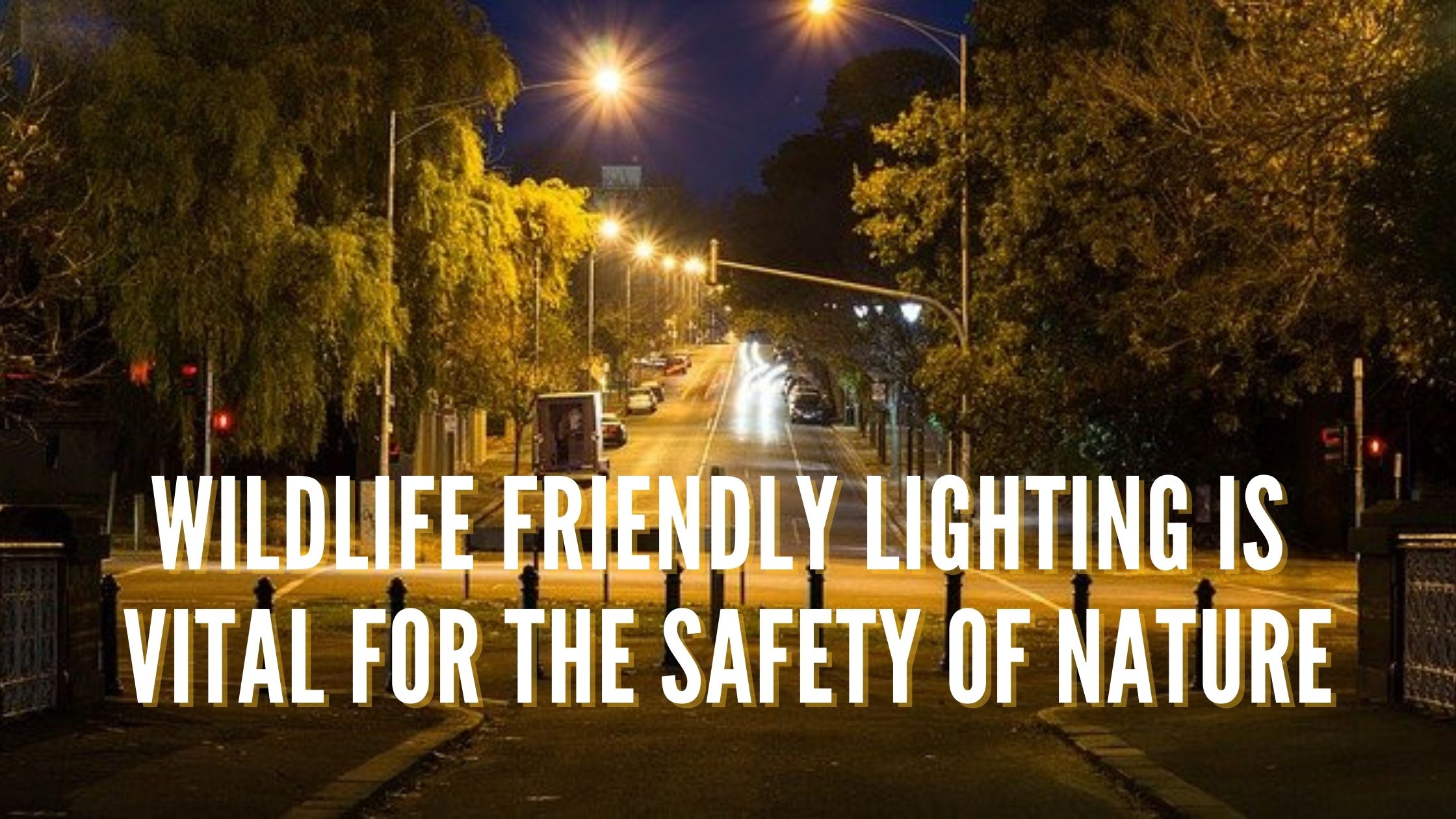We all have lights outside at night, both at our homes and places of business. Even communities provide lighting for their travelers throughout streets, parking lots, signs, and along sidewalks. It makes you feel safe and allows you to see what is going on after dark in your area. However, artificial light is a threat to wildlife.
Light at night disrupts natural behavior and can cause injury or death to the animal population. It can disrupt the circadian rhythms of most animals. For example, migrating birds don’t realize that the artificial light isn’t day and can disorient birds during their migration; and instead, bright lights can attract birds and cause fatal collisions. This can be prevented or even improved by installing the proper lighting for nighttime use.
Ways to Help
There are a few ways you can help lower your impact on wildlife and migrating birds. This includes installing the lights low, using motion-sensing technology, using directional LED optics, and using amber or red output light fixtures. All of these have proven to reduce the impact on the wildlife and the surrounding area. Let’s go over each of those ideas one by one.
Installing the Lights Low
When installing new lights, installing them as low as possible to provide only the light where necessary will ensure that added light pollution isn’t causing harm. Since light isn’t typically required to be installed at 30’ or higher, having the light fixtures mounted at 15’ or lower will keep the light in the area needed only. High mast lighting should only be used in the rare cases it is required to provide illumination for large amounts of area.
You can use shields on the lights to keep the light only in the area that is required. Shields can be very helpful in areas where backlight or uplight can be detrimental, like with lighting for signs or floodlighting for large area lights. Keeping the light pushed only to the needed areas makes sure that disturbances are kept to a minimum or even eliminated.
Using Motion Sensors
In large areas where tall poles or floodlighting is used, adding motion sensors that operate at a reduced output or off during the times is great for reducing your impact on wildlife. When there is no motion, the bright light isn’t always necessary; however, when motion is detected, the lights can come on to full intensity and ensure proper illumination is attained. Once movement is no longer detected, the lights can then reduce or turn off again.
Since the light won’t stay on for hours at a time, it will cause little disturbance to the surrounding wildlife. This is not always an available option with lighting, at least not where there is activity throughout the night or a high-security project. However, this should be considered where available.
Using Directional LEDs
Use a directional LED fixture with proven optics. Having task-specific lighting installed on a project will ensure that there is light where necessary and no excess where it isn’t. The optics will distribute the light where it is required in an area and keep the light from spilling out into other areas. This type of lighting also allows for fewer fixtures to be used since the light is distributed in a specific way and not just all over.
As stated above, these lights can also be combined with motion-sensing technology for even greater benefits since the light will only be on when required and only provide light where it is necessary.
Using Amber or Red Lights
Finally, using long-wavelength lights such as amber and red lamps provide enough lighting for us as humans to see; however, is not the right wavelength for most animals to notice. These types of lamps will not disturb nocturnal animals. It will also not have them gravitate towards an area they are not wanted, especially if you live near a coast or wildlife area.
Using one or more of these options doesn’t just benefit the animal population at night, but also provides cost benefits. In addition, since there isn’t as much wasted light for non-task-specific requirements, the amount of power used at night for lighting is much lower. Definitely a win-win for both the environment and your bottom line.



